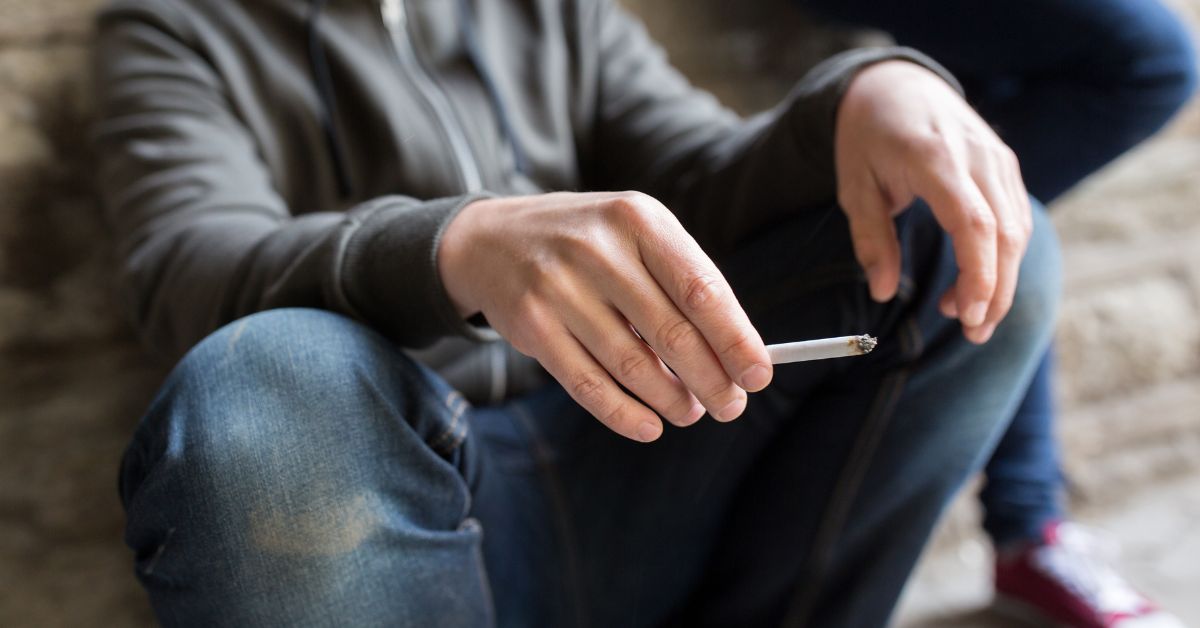One day, you wake up to find your child’s life involved in the unexpected cycle of addiction. The once innocent bundle of joy appears to be playing with fire, engaged with drugs whose seemingly harmless nicknames like ‘Mary Jane,’ ‘Molly,’ or ‘Crystal’ mask their destructive power.
As a teen, you’re growing and exploring your world, which sometimes means experimenting with drugs. Unfortunately, our kids ignore the lasting effects on their physical and mental health.
As a parent, you don’t want to see their dreams fall apart just because of an impulsive decision. That’s why it’s so important to help them as soon as possible.
In this article, we’ll delve into the most common drugs teens use and explore their potential consequences on their bodies and minds. Take a deep breath, and get ready to know your enemy.
Introduction to Common Drugs Used by Teens
It’s essential to recognize that not all teens turn to drugs. Still, is crucial to be aware of how do teens get drugs and the influence of addiction during youth. By watching for potential issues and taking action early on, there is a greater chance of avoiding a habit that could harm their future.
Common Culprits: A Glimpse Into the Enemy Lines
Navigating the teenage years can be tough. This is when our kids start discovering themselves and yearning for the freedom to explore and grow.
During this time, their brains aren’t fully developed, making it hard for them to see the negative consequences of their actions. That’s why it’s crucial to talk to our children about the dangers of drugs and alcohol early on, and keep an open line of communication.
To our kids, these substances might not seem like a big deal, but their effects can be truly devastating.
In the following table, you can find some information about some popular illicit drugs:
| Drug Name | Common Aliases | Effects |
|---|---|---|
| Marijuana | Weed, pot | Impaired memory behavioral changes. |
| Cocaine | Snow, coke | Cardiovascular risks, neurological damage. |
| Prescription Drugs | Based on drug types | Range from drowsiness to severe addiction. |
| Inhalants | Based on household substances | Brain damage, sudden death. |
It’s important to take a moment to grasp the weight of this information fully. It can be intimidating to deal with a teenager who abuses drugs, but let’s take it step by step and move forward with courage.
Unpacking the Drugs Commonly Used by Teens

As we all know, teenage years can be tumultuous, with unexpected twists and turns. Unfortunately, some teens may find themselves on a different roller coaster involving substance abuse during this time.
We need to understand the most common illicit substances that our young people are struggling with today. This way, we can better address the issue and sincerely support them.
The Lure of Marijuana and Cocaine
Many teens struggle to resist the allure of marijuana and cocaine, as these are the most commonly found drugs on the streets.
Marijuana is common among adolescents and often called “weed” or “pot.” Despite the ongoing debate about legalizing recreational marijuana use and its medicinal properties, teenage use poses potential risks like impaired memory.
Today, the marijuana on the streets is many times more potent than the marijuana of years past, and often has harmful additives as well.
Meanwhile, cocaine and crystal meth present a clear danger with their momentary “high.” Teen cocaine use leads to long-term health complications such as heart attacks or seizures.
The Invisible Threat of Prescription Drug Abuse
In addition to illegal drugs, many teenagers unknowingly abuse prescription drugs, which can be just as dangerous. Medications like prescription painkillers and CNS depressants are meant to treat illness and alleviate pain. But because they are easy to use at home and available for purchase at every pharmacy, they can become addictive.
Among teens’ most commonly used drugs, we find opioids, sedatives, and stimulant drugs. Teens think that because these drugs come from doctors, they are safe. In reality, when misused, these drugs can be devastatingly harmful.
In the following table, you can find the leading players in this category:
| Drug Type | Generic names | Legitimate Use | Consequences of Abuse |
|---|---|---|---|
| Opioids | Vicodin, OxyContin, Codeine, etc. | Pain relief | Euphoria, confusion, drowsiness, and cardiovascular complications. |
| Sedatives | Xanax, Valium, etc. | Anxiety or sleep disorders | Depression, hallucinations, anxiety, and restlessness. |
| Stimulants | Adderall, Ritalin, etc. | Attention deficit disorder | Increased alertness, danger to heart and blood pressure, risk of stroke. |
Teenage Heroin Use – An Unseen Epidemic
Heroin appears enticing with its promise of relief and pleasure, but the reality is that it’s dangerous and could ruin your loved one’s life.
Kidney disease, skin infections, overdose, and even death are among the consequences of teenage heroin addiction. Sometimes, the signs of teenage heroin use are hard to catch, but they might include physical changes like needle marks on the arms or nosebleeds and nausea or constipation.
Inhalants – The Readily Available Danger
Inhalants are easy for teens to obtain and represent a significant problem. Its abuse can be frightening, as many of the chemicals in our household items transform into the drugs most commonly used.
Objects you can find at home, including aerosol cans, nail polish remover, glue, or correction fluids, contain fumes that can make them feel high for cheap. This easily accessible danger often slips through the cracks, unnoticed by those who don’t know what to look for.
FREE: Get the 3 pieces of advice that helped me understand this disease of addiction
Why Do Teens Use Drugs?
To understand drug abuse among teenagers, we must learn the reasons behind it. Let’s explore the triggers that contribute to this alarming trend and look for ways to get help for your teen. It won’t be easy, but we can make a difference by recognizing the causes and finding solutions.
Sneaky Societal Pressure
Adolescence can be difficult for our kids to navigate, with pressure to adapt to social norms and fit in. Unfortunately, it can often lead to using drugs as a coping mechanism.
- Peer Pressure: When teens want to feel accepted and fit in, they can engage in risky behaviors, like substance use.
- Image and Social Media Influence: Teenagers’ obsession with image and popularity, fueled by social media, can lead them to emulate the prevalent drug culture by seeking “likes” and “shares.”
Communication is key when dealing with drug abuse in teens. It is crucial for parents to be aware of the warning signs and have open, honest conversations with their children about the dangers and consequences of addiction.
The Teenage Brain & Curiosity
Remember that the teenage brain is naturally wired to be curious and seek out new experiences, even if they may be risky.
- Adolescent Brain Development: The reward center in the teen brain develops faster than the part responsible for decision-making and impulse control, which leads to impulsive decisions.
- Curiosity and the Desire for Independence: The desire for independence, new experiences, and self-discovery may lead adolescents to experiment with drugs.
Results of Teen Drug Abuse

Teen substance abuse can have a profound and lasting impact. Although a momentary “high” may be their immediate goal, the results of these actions can be severe and long-lasting.
The consequences can include physical harm, stunted emotional and psychological development, and an inability to overcome their addiction.
As we work to help young people overcome these challenges, it’s important to understand their unique struggles and provide support along the path to recovery.
Unraveling the Immediate Consequences
Drugs leave noticeable stains on a teen’s life, even in the early stages of addiction.
- Physical Health: The use of drugs in a developing system can cause various health problems, including appearance changes and significant organ damage.
- Mental Health: Substance abuse can worsen mental health in teenagers, worsening existing disorders and even causing new ones.
The Long-Term Impact: Casting Shadows on the Future
Drug abuse can cast a shadow on the future that’s hard to see until it’s too late.
- Academic Performance: Prolonged teenage drug abuse can hinder academic achievement by impairing cognitive function.
- Social Relationships: Drugs can cause emotional distance, leading to isolation and psychological distress for the addict and their loved ones.
UPDATED: Discover the 3 life-changing things about addiction I wish I knew years ago
Overcoming Drug Abuse: An Uphill Battle
Teenagers, vulnerable to physiological and psychological changes, face a daunting task when overcoming addiction.
- Relapse: The probability of relapse is high during stressful periods or moments of emotional distress.
- Dual Diagnosis: This term refers to when someone has a mental health disorder and substance abuse. Treatment can be complicated because the two conditions can affect each other.
Understanding these challenges is the first step. The next one? Empowering our teens with the support, care, and tools to break free from this vicious cycle and reclaim their lives.
Addressing the Issue of Teens Abusing Drugs

It’s important to understand the types of drugs that teenagers might be tempted to use, provide them with the proper education, and ensure there are available resources to help them avoid making dangerous decisions.
As parents, it’s our job to create a safe and supportive environment for our young people so they feel comfortable talking to us about their challenges. By offering alternative coping strategies and being there to support them along the way, we can help our teens navigate this tricky terrain and make healthy, informed choices about their lives.
Together, we can work towards ending the cycle of drug use among teens and create a safer, happier society for everyone.
Frequently Asked Questions About the Common Drugs Used by Teens
What are the common drugs that teenagers use these days?
The common drugs frequently used by teenagers include Marijuana, Cocaine, Prescription Drugs, and Inhalants. Marijuana, also known as ‘weed’ or ‘pot,’ and Cocaine, referred to as ‘coke’ or ‘snow,’ are common illicit substances. Prescription drugs, such as opioids, sedatives, or stimulants, are often misused despite their medicinal use. Inhalants, easily available as household items, threaten unknowing teenagers.
How should I talk to my teen about drugs?
To start a conversation with your teen about drugs, create a non-judgmental environment and continue the conversation over time. Share your concerns about the dangers of drug use and its consequences. Ask about their opinions, acknowledge their feelings, avoid lecturing them, and actively listen.
SEE: Find out why your boundaries keep getting crossed (and how to reinforce them)
Are there early warning signs I should look out for if my teen is using drugs?
Yes, there are many early warning signs of drug use you should look out for. Be aware of changes in behavior like withdrawal from family activities, declining academic performance, disinterest in hobbies, abrupt alteration in friend circles, or secretive behavior. Physical signs might include bloodshot eyes, frequent nosebleeds, sudden weight changes, or unexplained lack of energy.
How can I support my teen if they’re struggling with addiction?
When supporting a teen battling addiction, it’s important to acknowledge the issue, provide unconditional love and support, and avoid judgment or blame during conversations. Seek professional help and create a healthy home environment. Remember that overcoming addiction is a marathon, not a sprint, and patience and persistence are key.
